In Bed Stuy, Cultural Icon Billie Holiday Theatre Advances to the Next Stage
A renovation and rebranding will help the theater continue to affirm the beauty, history and cultural legacy of its community.

Photo via Bedford Stuyvesant Restoration
The founder of the Billie Holiday Theatre, Herbert Scott-Gibson, was by all accounts the definition of a Renaissance man.
“He was a visionary, he spoke six languages, he sang opera,” says Dr. Indira Etwaroo, director of the theater since 2015, of the man who was also responsible for leading the charge to establish the Fort Greene Historic District. “He was an African-American gentleman who understood that if a community had a place to come together, to hear their stories and see themselves on stage — a place that affirmed of their beauty, history, and cultural legacy — how transformative that could be for a community.”
The Billie, as it’s affectionately known, opened in Bed Stuy on the corner of Fulton Street and Marcy Avenue in May 1972, inside the neighborhood’s Restoration Plaza, to serve as a hub for theatrical development and performance, supporting the talent found in one of the largest black communities in the country.
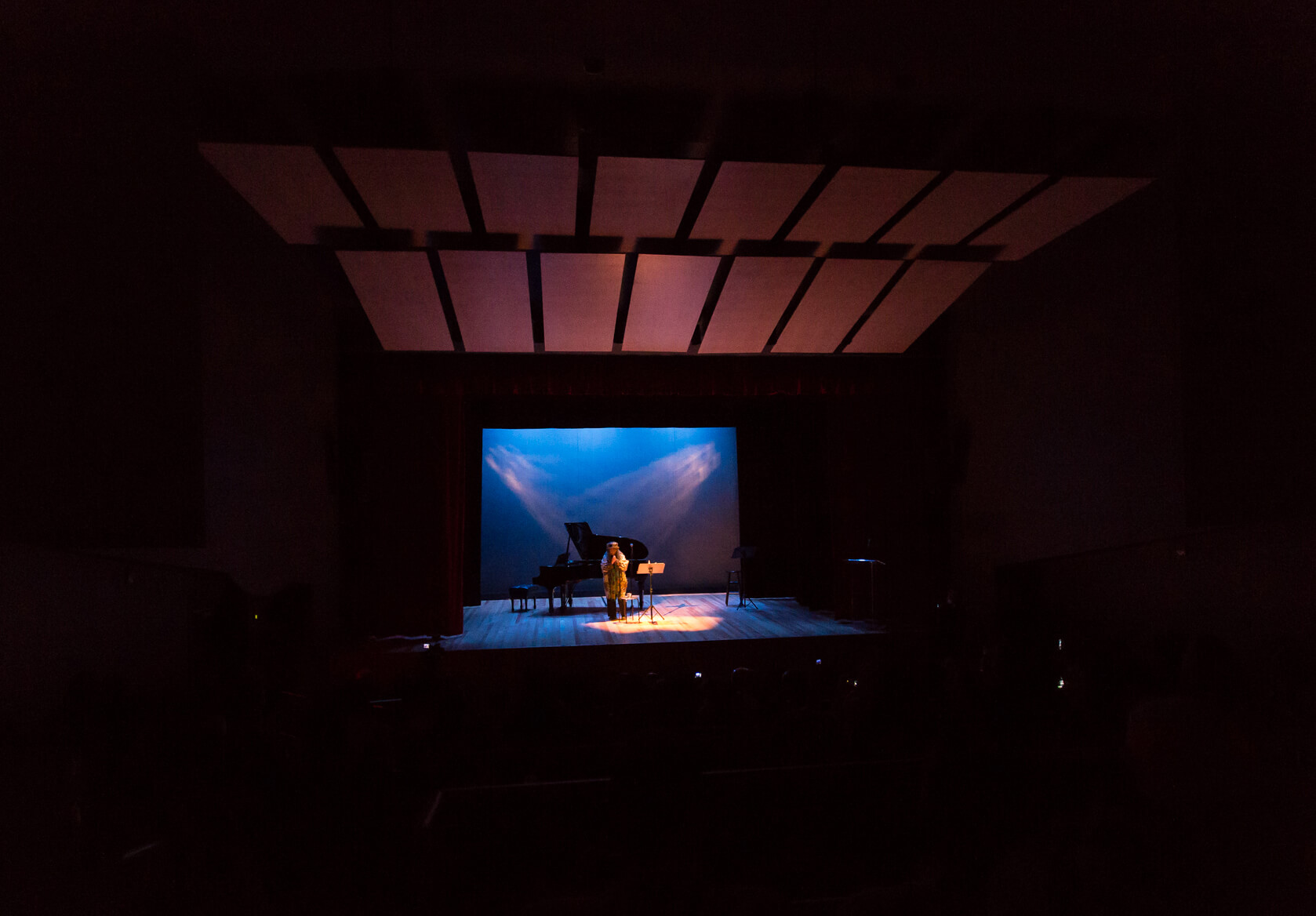
But on the 45th anniversary of the venue’s opening, some change is afoot. The theater reopened last week after being closed for nearly two years while undergoing a $4.1 million renovation project funded by the Mayor’s office, the Brooklyn Borough President and the New York City Council.
In addition to new state-of-the-art facilities, the programming that will be offered at the venue is expanding to include music, dance and film.
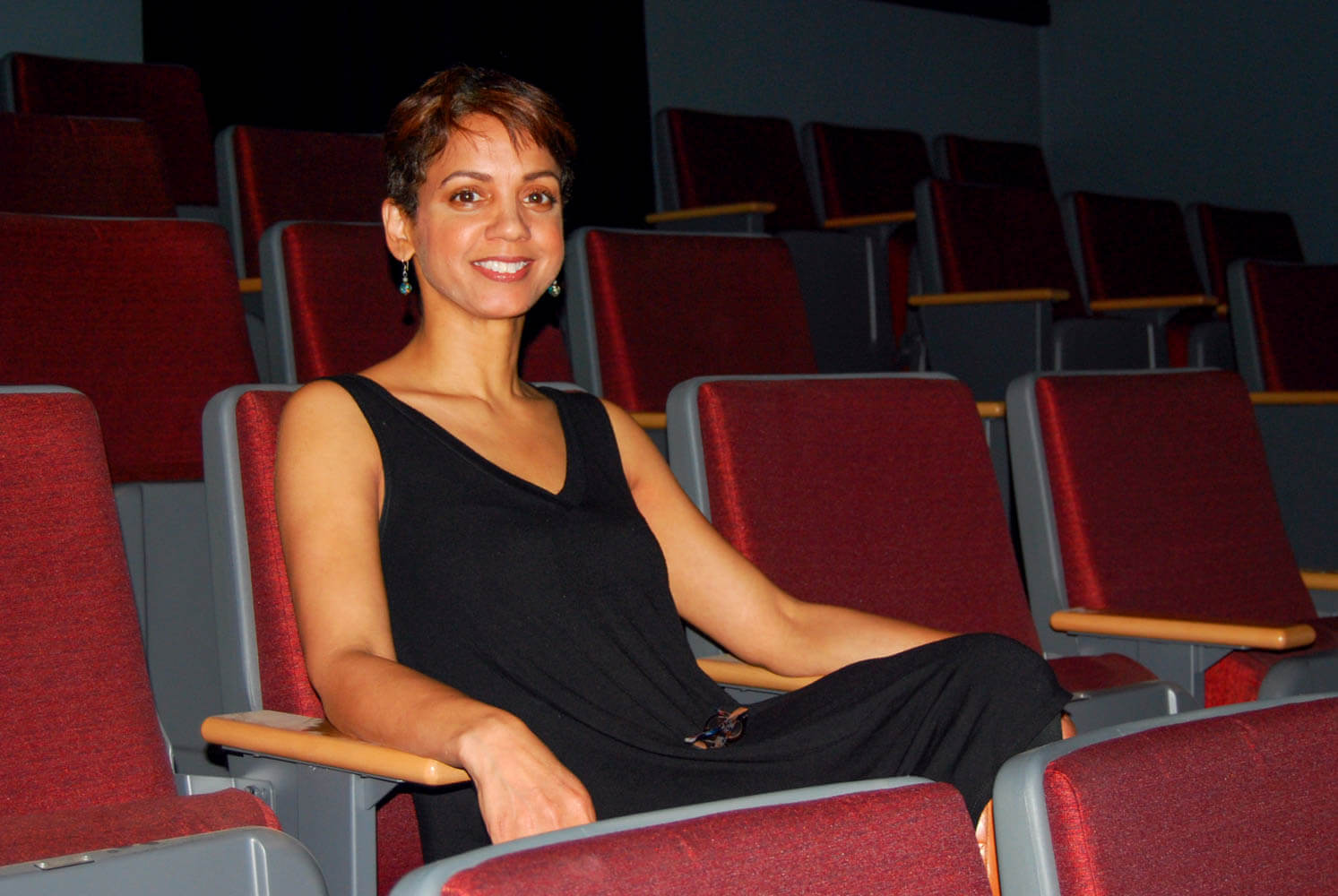
Though its own 401c3, the Billie Holiday operates under the Bedford Stuyvesant Restoration Corp. — also a nonprofit and the first-ever community development organization in the U.S. Along with its business, weatherization, and economic solutions centers, an integral fourth pillar of Restoration’s programming is its Center for Arts and Culture, which Etwaroo also leads.
Coinciding with the theater renovation, the organization’s cultural arm has undergone a rebranding to usher in the updated programming the Billie will host.
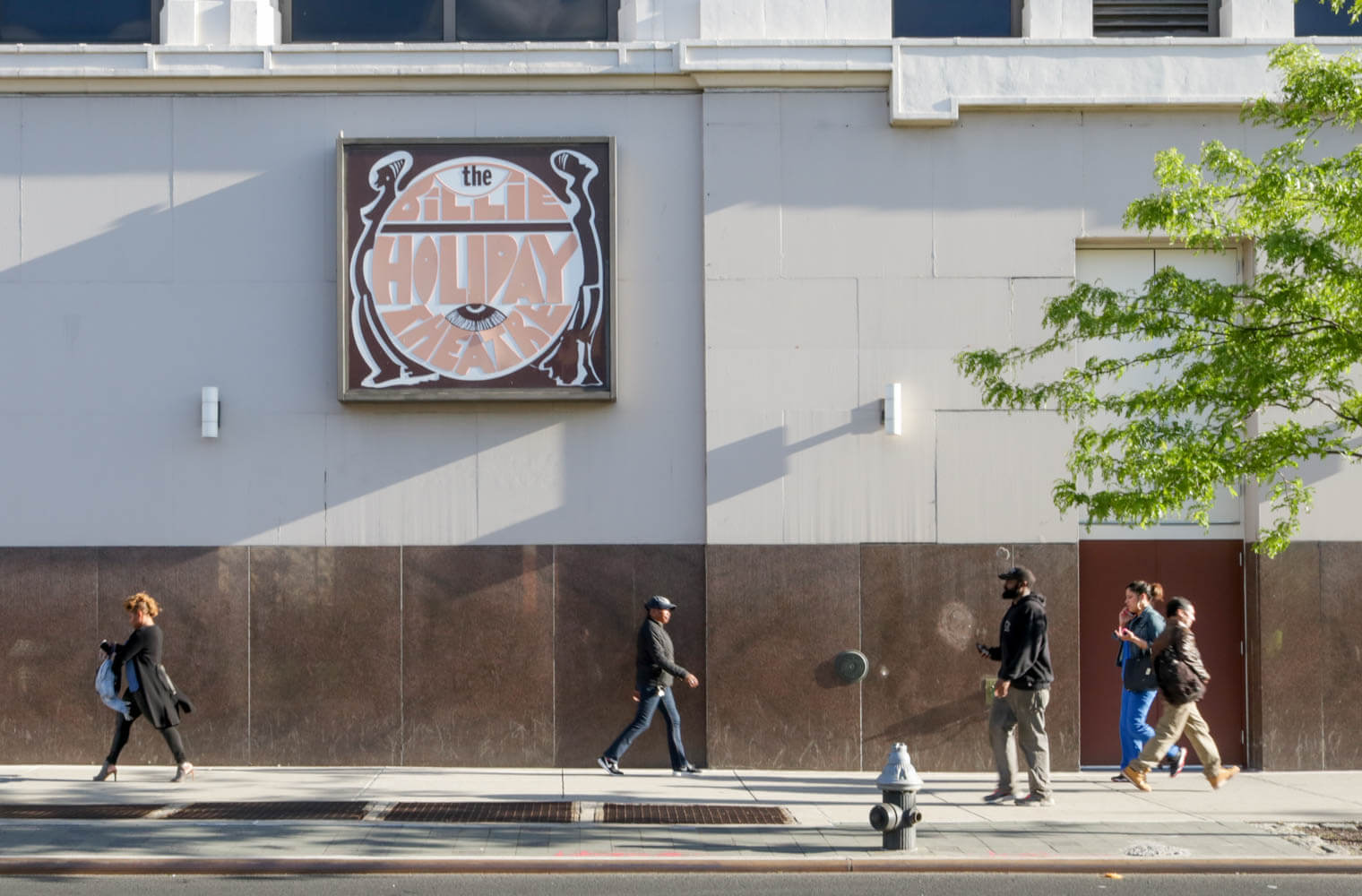
“’The Center for Arts and Culture at Bedford Stuyvesant Restoration Corporation’ is not an easy handle, especially now, in the days of social media,” Etwaroo acknowledges. Hence the new, catchy, and infinitely more hashtag-able “RestorationART.”
And those caps are not just a random stylization. “We went through a rebranding process to understand what was really important to us: That art is always at the center, but that our community roots in revolution is also integral. So we’re unpacking art as a revolutionary tribe in a revolutionary time: ART,” she explains. “This is really a 21st century creative complex that we are launching this year to solidify this branch of the organization as a necessary destination in the epicenter of black culture in the United States.”
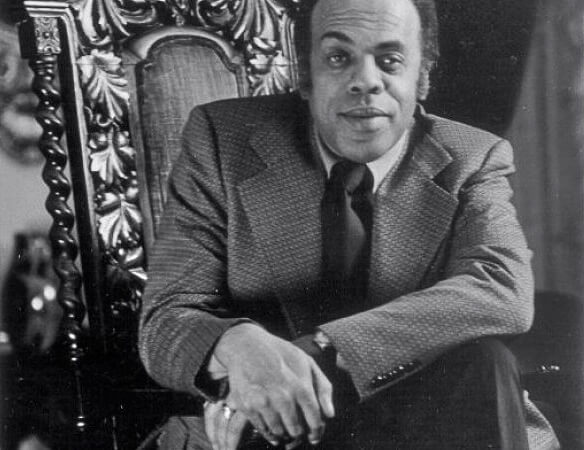
The nuts and bolts of that include arming the refurbished 200-seat auditorium with new lighting, stage rigging and audio-visual equipment; enhanced ADA accessibility; and an enlarged stage equipped with sprung maple flooring to enable the space to host dance.
The flooring is a favorite detail of Etwaroo, who says: “The floor is made of two and a quarter inches of these incredible, stacked maple layers, all so that we could properly ensure the integrity of our dancers’ bodies.”
During the renovation, a wall bearing original posters from the theater’s early years that had since been covered up was unearthed behind the stage. And while the delicate original artifact is, for the time being, safely stored in the RestorationART offices on the complex’s third floor, the original announcements have been photographed and re-created on a wall in the new, state-of-the-art backstage facilities, to provide inspiration from the early days for the performers who now grace this space.
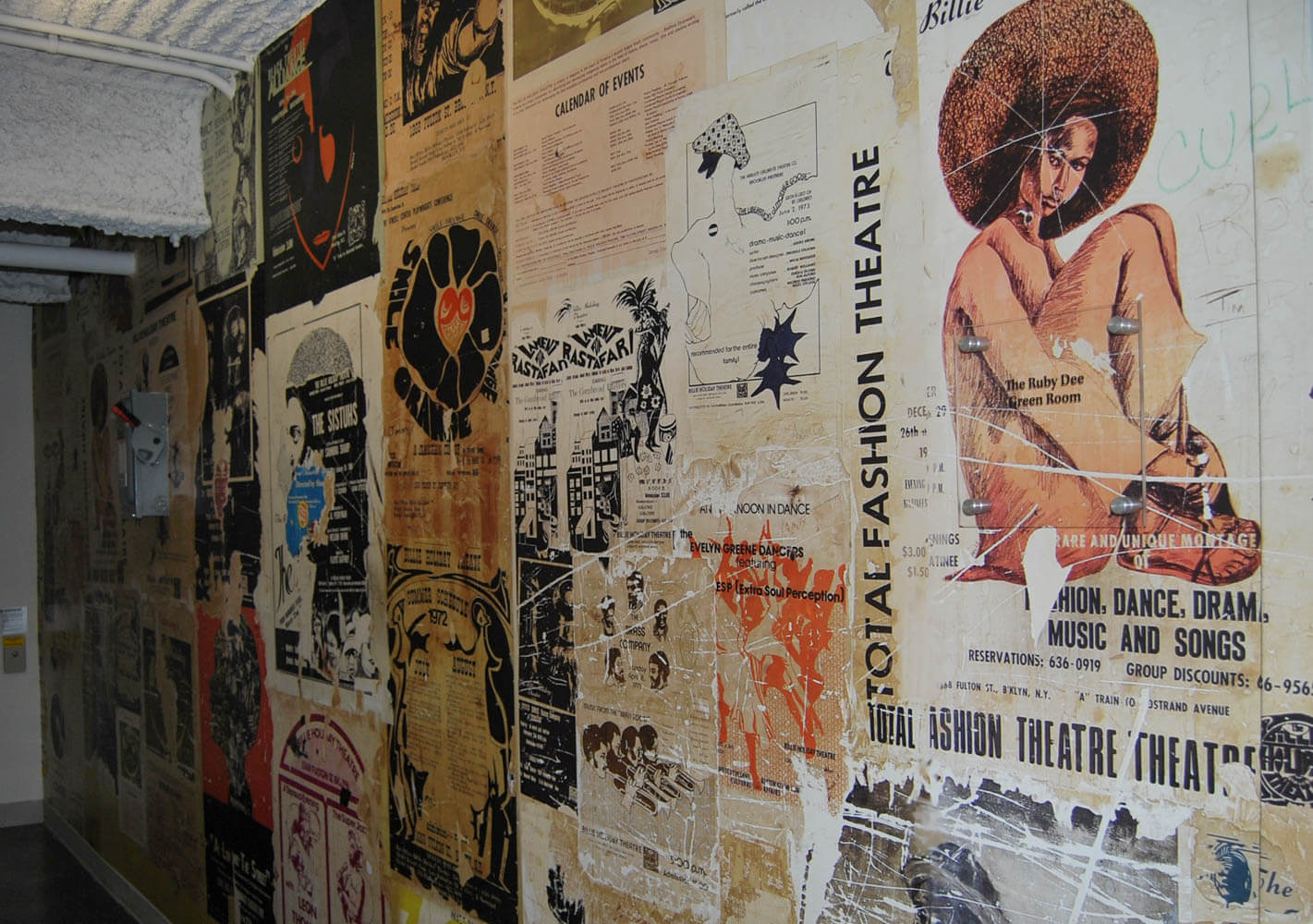
The first of those were the actors and musicians taking part in last week’s roster of opening events. That included a theatrical reading of Zora Neale Hurston’s Their Eyes Were Watching God directed by Tony-award-winning actor Ruben Santiago-Hudson and accompanied by original compositions performed live by Bill Sims, Jr., to mark the 80th anniversary of the novel’s publication.
Also on the program: a celebration of Lynn Nottage’s second Pulizer Prize win, and the new commission 50 in 50: Writing Women into Existence, which tells the true stories of 50 black women and girls, submitted by women all over the globe (and as close to home as Bed Stuy) in response to a curatorial call from playwright Dominique Morriseau.
In addition to the theater renovation, two revamped rehearsal and performance studios located at ground level in Restoration Plaza will also soon be completed (their soft launch was to coincide with the theater opening, but construction delays have pushed this back).
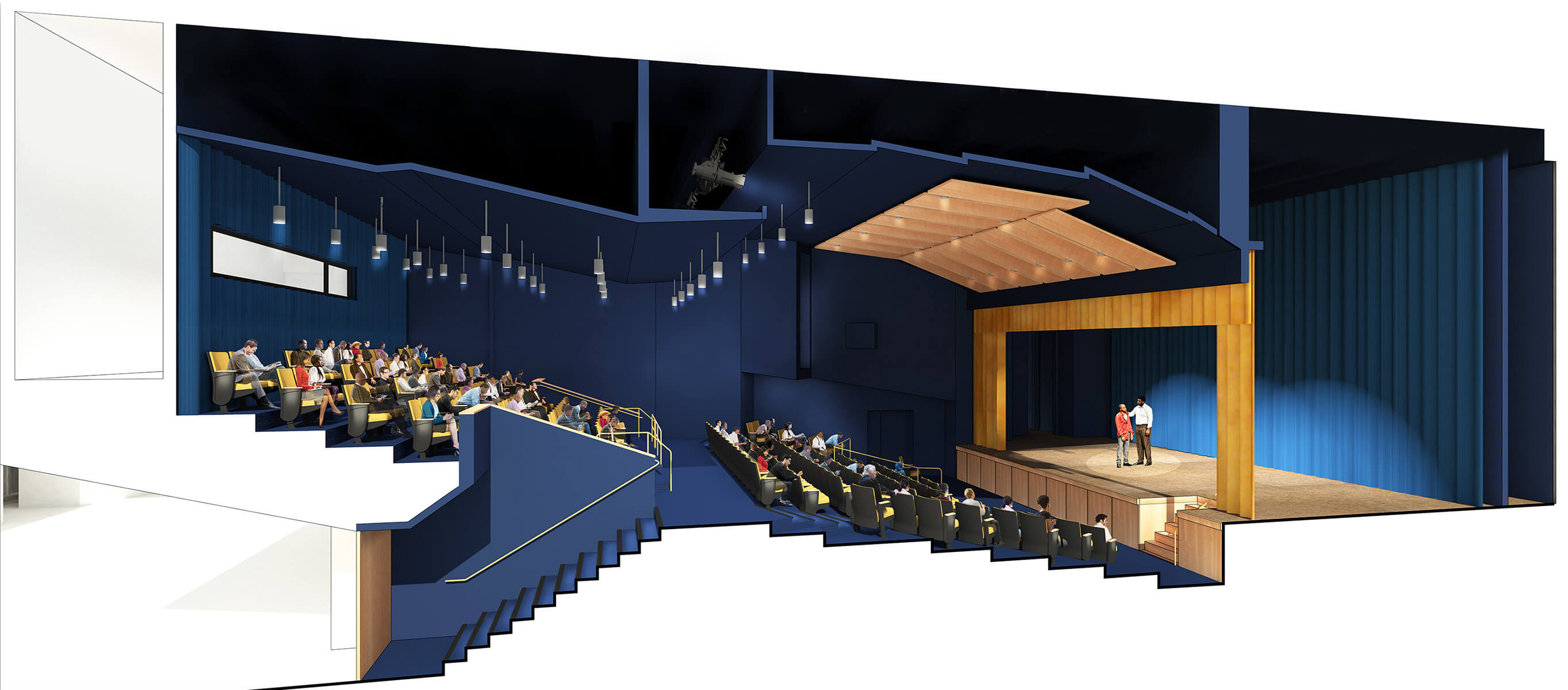
With huge storefront windows, visitors are able to see the classes, dance, theater and workshops that are incubating within as they walk by. “It’s wonderful to have the Billie Holiday Theatre, but we also knew we needed to integrate a place for choreographers, composers, and theater artists to be able to develop new works without the pressure of having to fill a 200-seat house, or without all of the promotion and marketing that goes along with that,” says Etwaroo.
The two studios — one approximately 2,000 square feet, the other 1,000 square feet, both with dressing rooms and backstage amenities — will offer space for the Ronald K. Brown/Evidence Dance Company, the ChoreoQuest artist residency, and the Frank Silvera Writers Workshop (all of whom have permanent residencies with the organization) to stage previews of new works.
They will also accommodate community classes — including playwriting workshops, dance, and drumming classes — and a space for the RestorationART’s Youth Arts Academy, which instructs 200 students a year from the ages of three up to 18.
“The studios are booked already, if that’s says anything,” notes Etwaroo. “We didn’t build them and say ‘we’re going to fill it with content,’ we were overflowing — we were busting at the seams.”
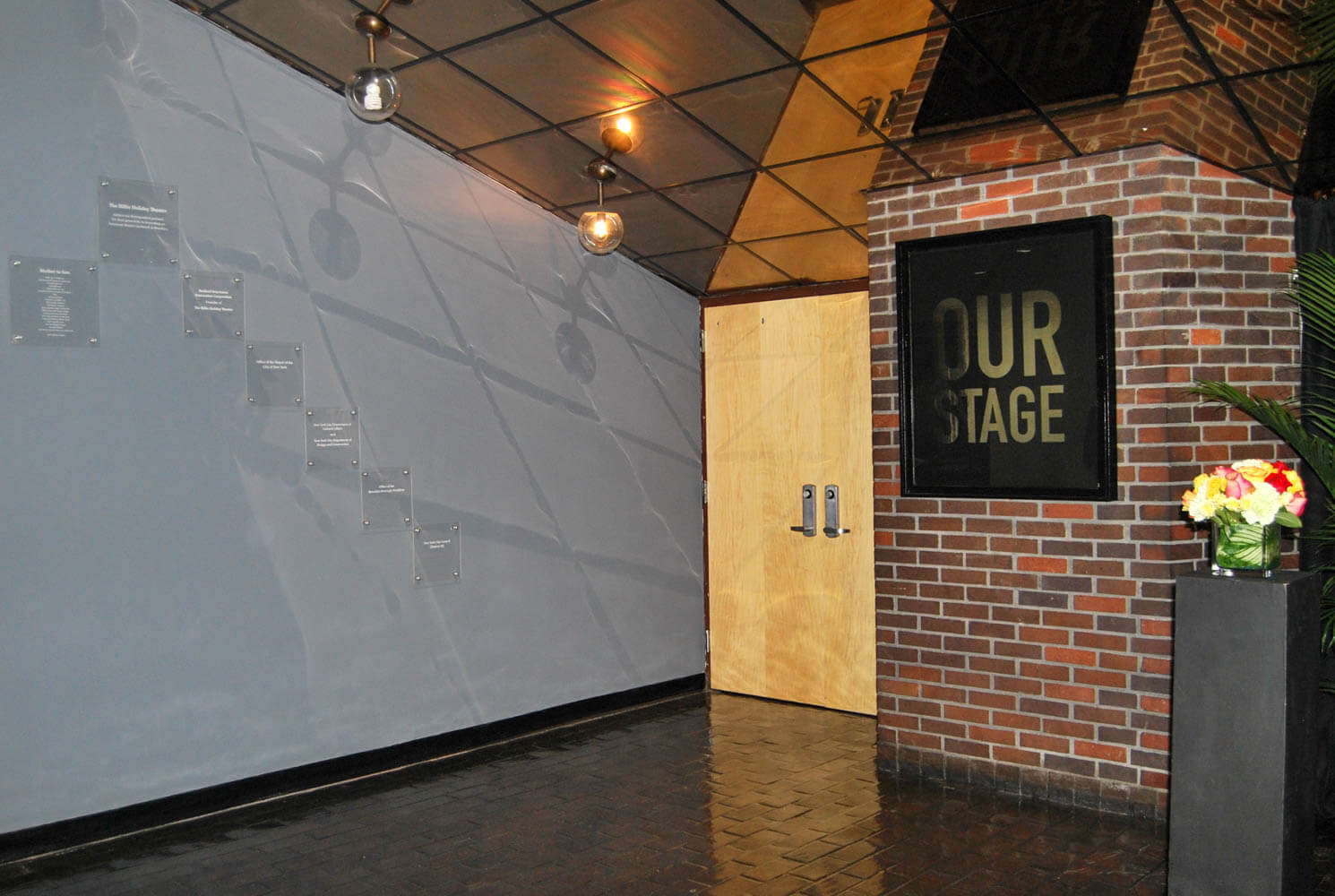
Restoration Plaza welcomes approximately 1.1 million people through the plaza annually but, Etwaroo acknowledges, much of what RestorationART does can be a little opaque to those who pass through.
“The Billie is a little tucked away inside the building; our Skylight Gallery is tucked away,” she says. “This ground floor space will be where they can really see art in motion.”
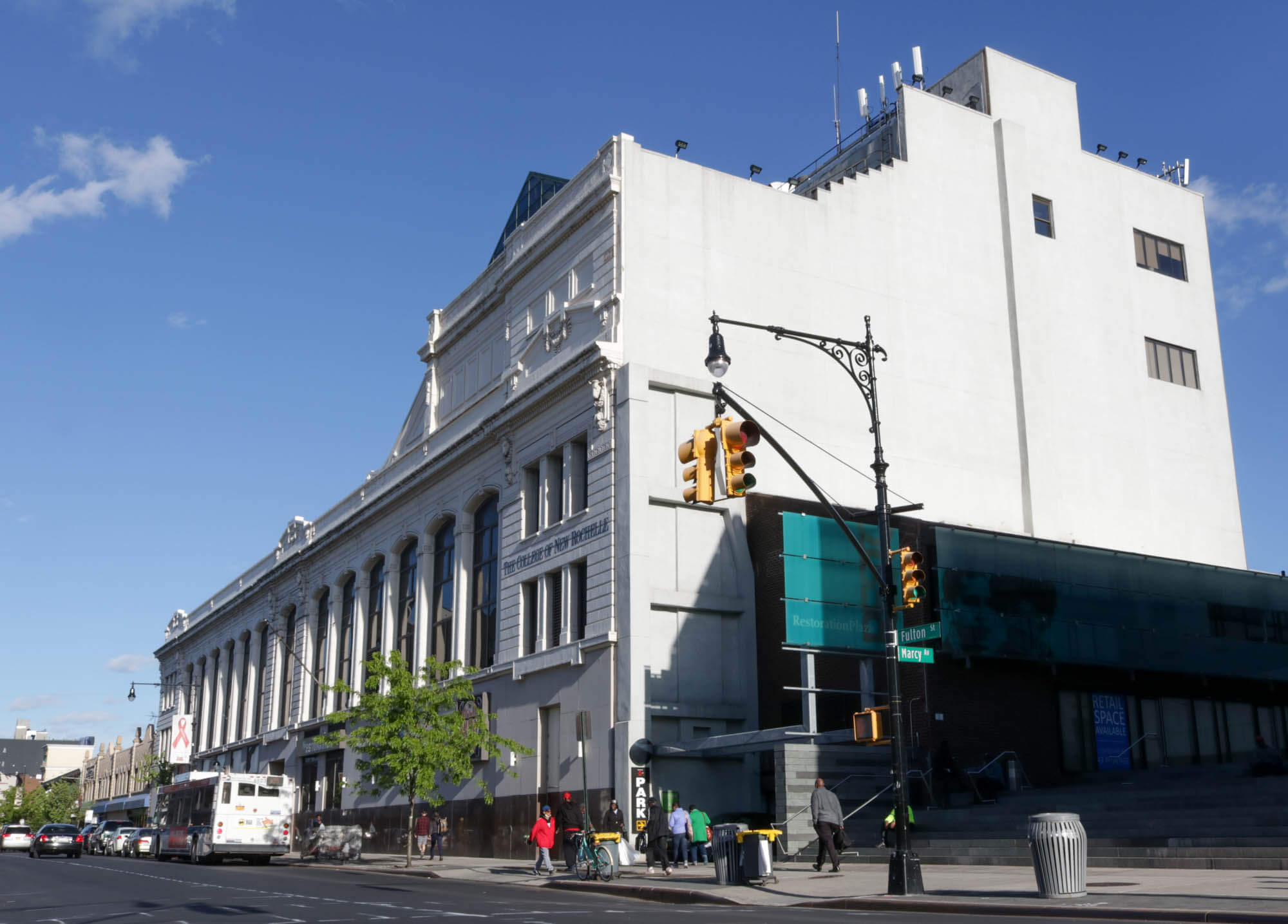
And there’s more development to come. The rebranding of RestorationART and the theater modernization is only the first part of a three-phase plan. Phase 2 includes a revamp of the front facade and box office and lobby bathrooms, while the third stage will focus on digital growth, including funding to enable live-streaming in the Billie and in the rehearsal spaces.
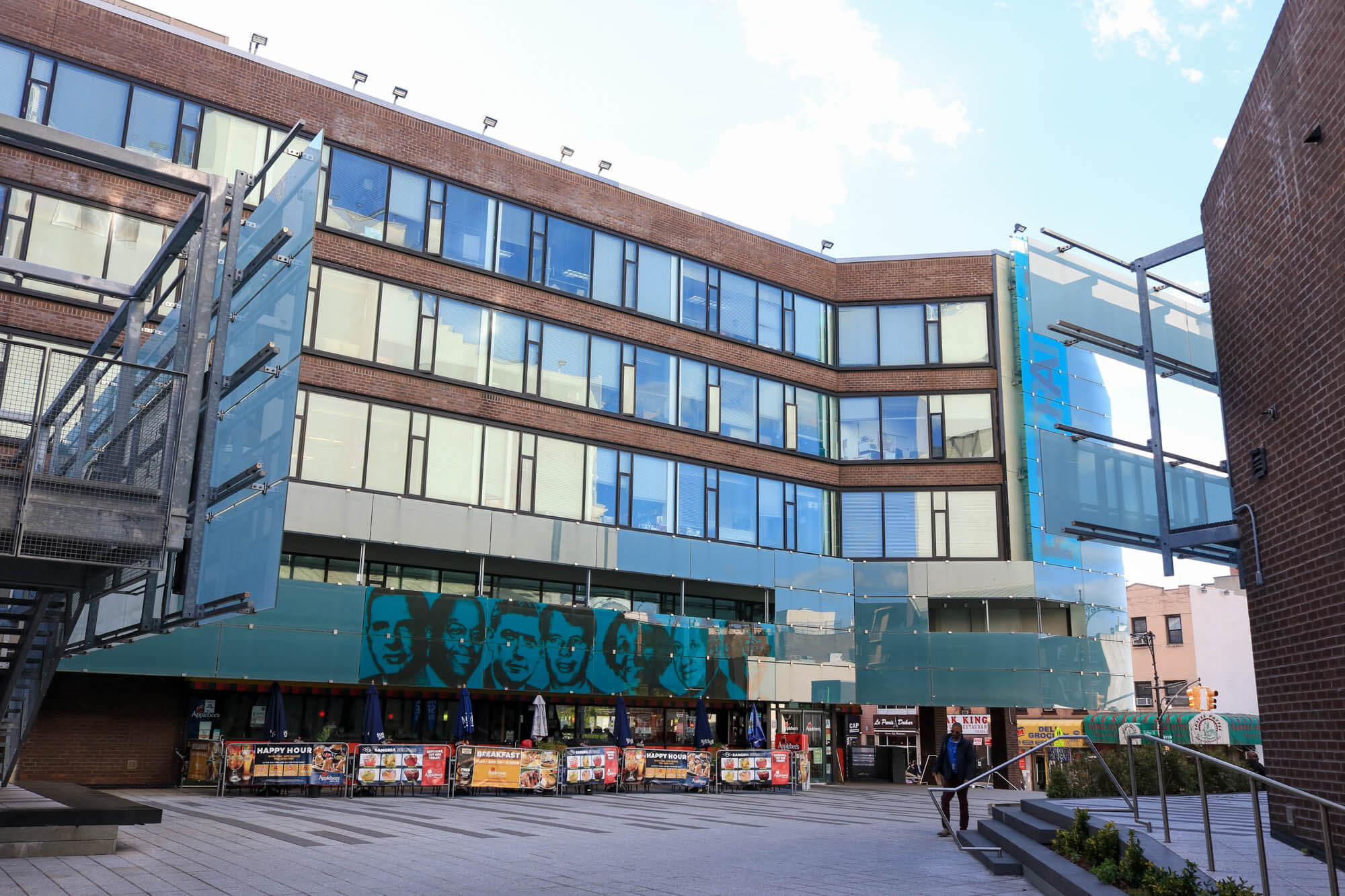
Noting that 69 percent of their audience is under the age of 44, Etwaroo says the focus of this final segment is to continue their millennial engagement. “This first phase was really about the structure — the heart of the theater,” she explains. “Phase 3 really goes past the bricks and mortar, to get our content out into the world.”
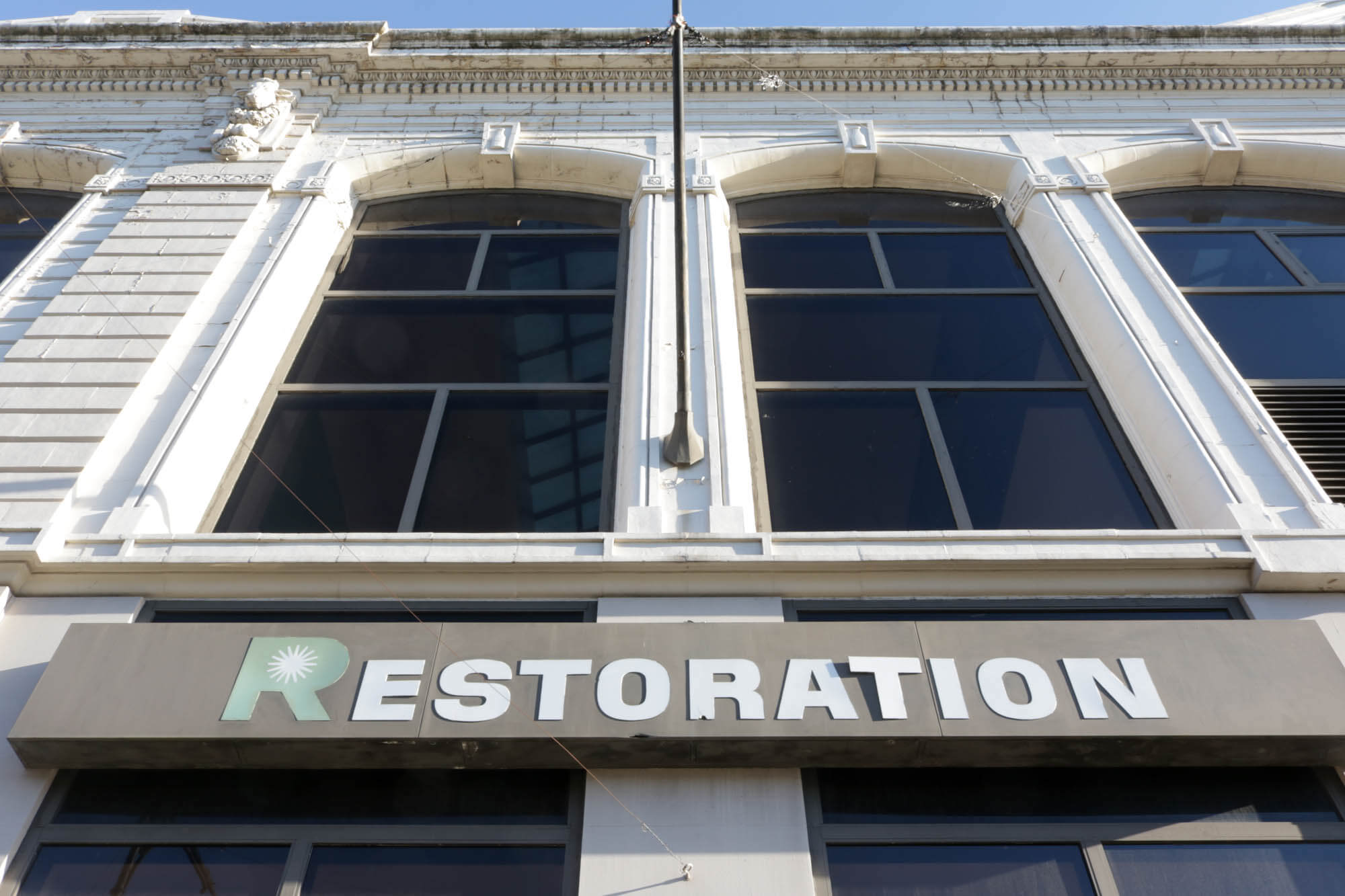
Related Stories
- Checking in at Restoration Plaza
- Building of the Day: 1368 Fulton Street
- Before and After Photos of Fulton Street Improvements in Bed Stuy
Email tips@brownstoner.com with further comments, questions or tips. Follow Brownstoner on Twitter and Instagram, and like us on Facebook.









What's Your Take? Leave a Comment